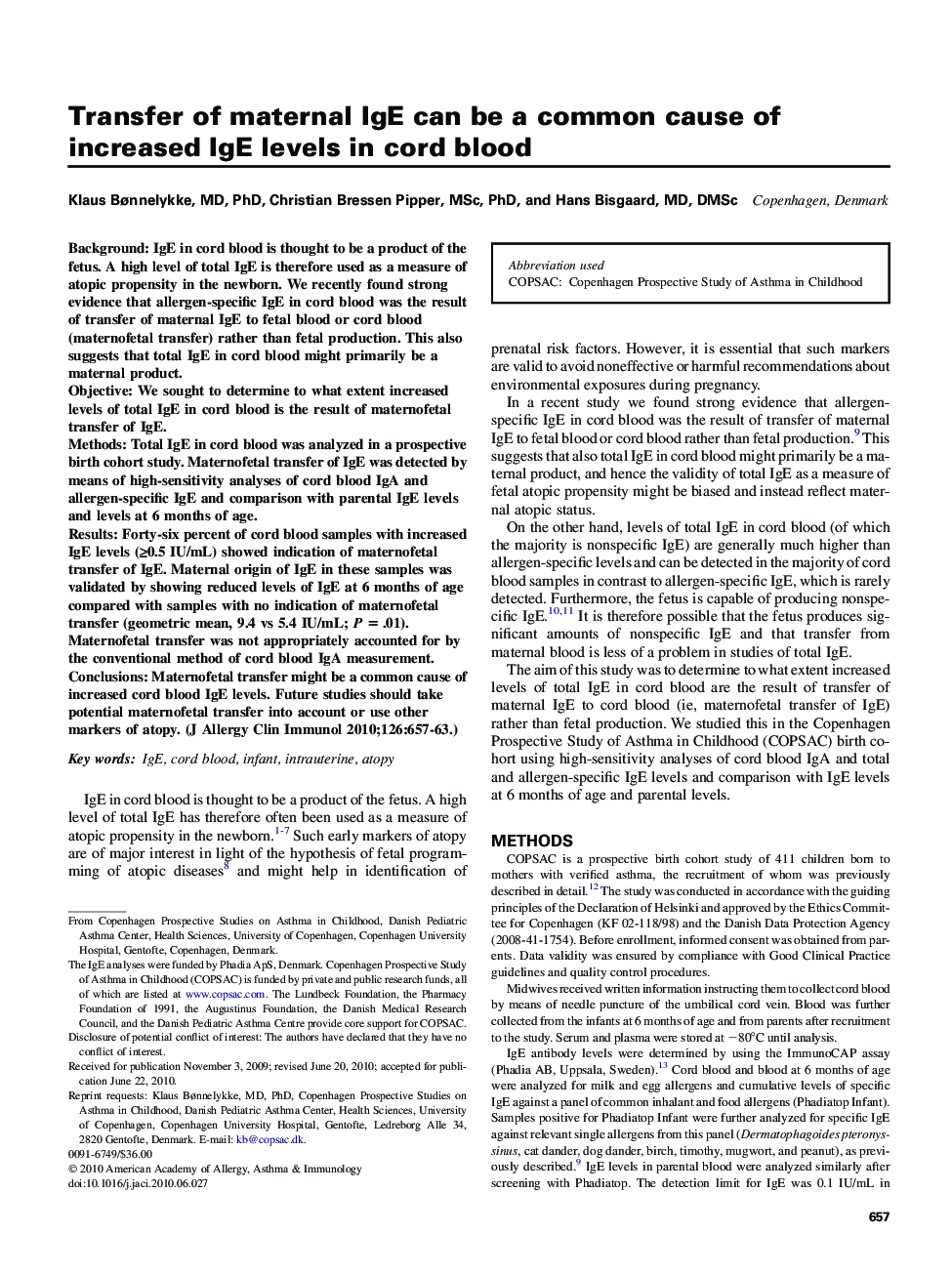| Article ID | Journal | Published Year | Pages | File Type |
|---|---|---|---|---|
| 6067368 | Journal of Allergy and Clinical Immunology | 2010 | 7 Pages |
BackgroundIgE in cord blood is thought to be a product of the fetus. A high level of total IgE is therefore used as a measure of atopic propensity in the newborn. We recently found strong evidence that allergen-specific IgE in cord blood was the result of transfer of maternal IgE to fetal blood or cord blood (maternofetal transfer) rather than fetal production. This also suggests that total IgE in cord blood might primarily be a maternal product.ObjectiveWe sought to determine to what extent increased levels of total IgE in cord blood is the result of maternofetal transfer of IgE.MethodsTotal IgE in cord blood was analyzed in a prospective birth cohort study. Maternofetal transfer of IgE was detected by means of high-sensitivity analyses of cord blood IgA and allergen-specific IgE and comparison with parental IgE levels and levels at 6 months of age.ResultsForty-six percent of cord blood samples with increased IgE levels (â¥0.5 IU/mL) showed indication of maternofetal transfer of IgE. Maternal origin of IgE in these samples was validated by showing reduced levels of IgE at 6 months of age compared with samples with no indication of maternofetal transfer (geometric mean, 9.4 vs 5.4 IU/mL; P = .01). Maternofetal transfer was not appropriately accounted for by the conventional method of cord blood IgA measurement.ConclusionsMaternofetal transfer might be a common cause of increased cord blood IgE levels. Future studies should take potential maternofetal transfer into account or use other markers of atopy.
